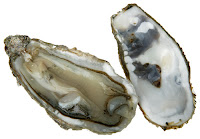 Remember blobfish? That captivating deep-sea fish with the world-weary look? HE'S BACK.
Remember blobfish? That captivating deep-sea fish with the world-weary look? HE'S BACK. With a series of well-timed appearances, blobfish has once again hit number 1 on the Blogfish charts. Here's just a small sampling of what blobfish has been up to.
On YouTube, you can see blobfish starring in a bittersweet tale of life's transitions. Or, check out blobfish mujlu , a strange vignette with anti-Microsoft leanings. There's some reality TV with blobfish appearing in situ at 500+ meters deep in the Ocean, and a brief interview revealing the true depth of blobfish's angst.
Here's a revealing portrait of blobfish and friends, and an ad appearance with blobfish promoting a Toyota concept car. Another appearance that built his image is this edgy bit role in Counter Strike, the violent online game. Finally, no listing would be complete without the inevitable blobfish duet with Ziggy.
Stardom has it's downside and blogfish has sometimes resorted to disguises in public, but the papparazzi seem to find him anyway. Blobfish had no comment after he appeared at number 1 on a "10 ugliest animals list, beating even the repulsive star-nosed mole and the loathed hagfish.
Fan tributes are appearing everywhere, with blobfish as a MySpace nom de plume of a 25 yr old Texan, and a 24 yr old from Tasmania.
On Facebook, we have the blobfish pity society, and the blobfish lovers.
In the blogosphere, we have Blob World, and the underwater Blobfish welcomes you.
Can you believe the reach of this mega-star?
 Since blogfish is blobfish central, send your blobfish sightings here, and I'll post regular updates. Now let's say goodbye with a final peek at one of blobfish's finer moments of the last few months (photo at right).
Since blogfish is blobfish central, send your blobfish sightings here, and I'll post regular updates. Now let's say goodbye with a final peek at one of blobfish's finer moments of the last few months (photo at right).















































